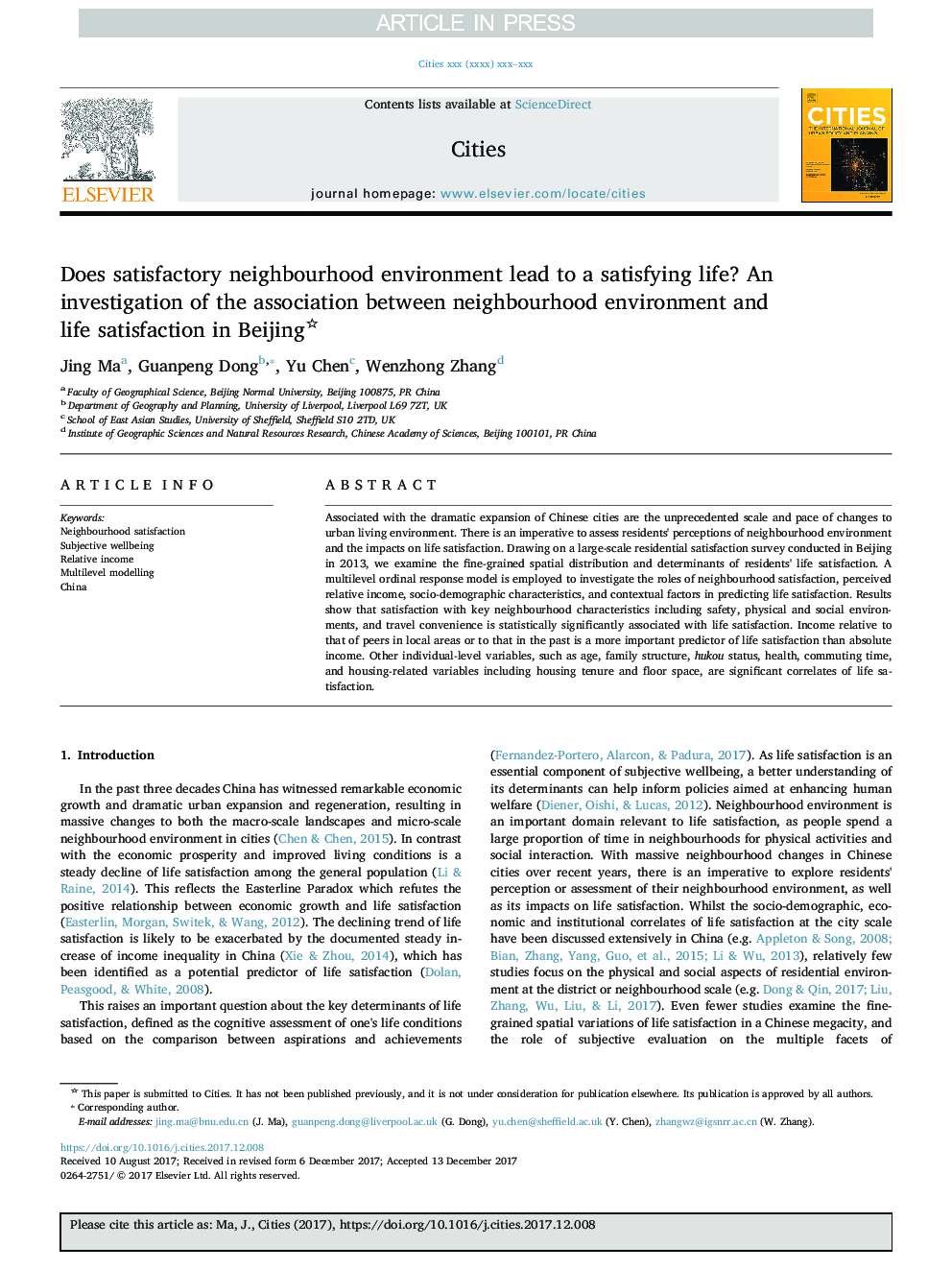| Article ID | Journal | Published Year | Pages | File Type |
|---|---|---|---|---|
| 7417569 | Cities | 2018 | 11 Pages |
Abstract
Associated with the dramatic expansion of Chinese cities are the unprecedented scale and pace of changes to urban living environment. There is an imperative to assess residents' perceptions of neighbourhood environment and the impacts on life satisfaction. Drawing on a large-scale residential satisfaction survey conducted in Beijing in 2013, we examine the fine-grained spatial distribution and determinants of residents' life satisfaction. A multilevel ordinal response model is employed to investigate the roles of neighbourhood satisfaction, perceived relative income, socio-demographic characteristics, and contextual factors in predicting life satisfaction. Results show that satisfaction with key neighbourhood characteristics including safety, physical and social environments, and travel convenience is statistically significantly associated with life satisfaction. Income relative to that of peers in local areas or to that in the past is a more important predictor of life satisfaction than absolute income. Other individual-level variables, such as age, family structure, hukou status, health, commuting time, and housing-related variables including housing tenure and floor space, are significant correlates of life satisfaction.
Related Topics
Social Sciences and Humanities
Business, Management and Accounting
Tourism, Leisure and Hospitality Management
Authors
Jing Ma, Guanpeng Dong, Yu Chen, Wenzhong Zhang,
